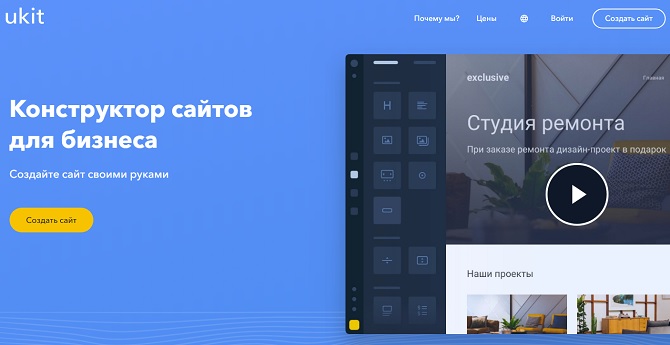SEO website design: how to create a website ready for promotion?
 A very common situation today: we spent a decent budget for creating a website, the resource looks attractive and it seems to even work, but it’s on the N-th page. Quite a cause for concern. Need more customers! It is urgent to save the business! We go to SEOs. Experts are watching the site, offering improvements, and there are so many of them that – mother dear! – easier to make a new resource.
A very common situation today: we spent a decent budget for creating a website, the resource looks attractive and it seems to even work, but it’s on the N-th page. Quite a cause for concern. Need more customers! It is urgent to save the business! We go to SEOs. Experts are watching the site, offering improvements, and there are so many of them that – mother dear! – easier to make a new resource.
All this happens because during the creation of the site no SEO parameter was taken into account. As a result – impressive expenses for rework, lost time, money and nerves. So why not take into account all the requirements of SEO right away while developing? If you think about them in the initial stages, then you can make a site that will be ready for effective promotion in search engines immediately after launch. Plus, everything else, you can rely on targeted traffic – the structure will fully reflect the demand. Tempting, isn’t it? This approach to website creation is called SEO design.
Today I will tell how to develop sites that are ready for promotion in search engines. And I will not just tell you, but I will show by the example of a client to whom we have created a site about photographing children and making graduation albums.
Website development with SEO in mind – where to start?
1. What does the customer want?
As it should be, all work begins with interrogation with passion. We sent a brief to the client in which it was necessary to provide basic information. The client answered us questions about the preferences in design, talked about the tasks that the resource should solve, prescribed basic wishes. The brief is needed so that the well-known “waiting vs. reality”.
Here’s how with sausages and pasta, only about sites =)
2. Concept development, market and competitor analysis
After the brief is filled, you can proceed to the next stage – analysis of the market and competitors. Without marketing research of the market not to manage. We studied what other companies of a similar subject offer their customers. We looked at the sites of competitors, studied, by what requests they are promoted.
We paid special attention to the analysis of the target audience: we formed a portrait of the target client, found out the scope of his interests and decision-making algorithms. What is important for him, what can cause trust and what to push away. All this was taken into account in the further development of the project.
3. Semantic core – the foundation of SEO design
This term is commonly understood as a list of queries (keywords and phrases) that will be used to further promote the site. In essence, SJ is an analysis of the lively demand of your subject matter on the Internet. It is on the basis of the semantic core that the structure of the site is compiled and the content is optimized.
So, with the help of Yandex.Wordstat, we have collected all the requests, entered them into a table (together with the indicator of the number of impressions per month), grouped them into high-frequency, mid-frequency and low-frequency ones.
Fragment of the table with the collected semantic core for the site of the studio:
semantic core of the site
We have written in detail and clearly in our book how to create a good semantic core for your site.
It seems to be nothing complicated yet: they collected requests, grouped them together – the semantic core is ready. It’s simple. And here we sit with a list of these keywords, we miss. And then what? It is this question that stuns all newbies who decide to create their own site.
Our approach is as follows: we suggest you not just prepare the SYa and sit and wait for the weather by the sea, but do something more abruptly – a relevance map.
4. From the semantic core to the relevance map
There is an article in our blog where we sorted out the bones of what a relevancy map is and what it is eaten with. In short, the relevance map is a document representing the content optimization plan of the site, compiled on the basis of the requests from the SJ. So, then open your document with a list of requests, distribute them to the intended pages of the site, immediately write down the tags and headers. On average, when creating a relevance map, we are guided by the following rules:
no more than 3-5 requests lead to one page;
home tweeters (for targeted traffic);
on secondary pages – narrow mid-frequency and low-frequency requests.
A relevance map is a faithful assistant not only in drawing up the structure of a resource, but also, for example, when creating a content plan for a site. Give the document to copywriters – for them it will be a kind of TK for writing excellent optimized texts.
Fragment of the relevance map for the future site of the photo studio:
relevance map
5. Development of the structure and site navigation
Relevance map is ready. You can begin to create the structure of the site – a clear hierarchical system of relative position and links pages.
5.1 Structure
Navigation is a reflection of the site structure that the user sees.
The navigation menu should be an assistant to the visitor of the resource.



